Scientists reveal the 10 worst foods for the environment, including several VEGAN options
With rain forecast for much of Britain this evening, many Brits will be planning to curl up on the sofa and order a takeaway.
But a new study may make you reconsider your options.
Scientists in Singapore have revealed the popular dishes that are worst for the environment.
Many of these dishes are meat-based, such as Brazilian steak, chicken jalfrezi and spicy beef stew.
You might be surprised to learn that several others, including kidney bean curry and lentil soup, are plant-based.
With rain forecast for much of Britain this evening, many Brits will be planning to curl up on the sofa and order a takeaway. But a new study may make you reconsider your options. Scientists in Singapore have revealed the popular dishes that are worst for the environment
Most often, scientists warn about the carbon footprint, which refers to the amount of carbon dioxide released into the atmosphere as a result of our activities.
Instead, this study looked at the ‘biodiversity footprint’, which refers to the extent to which habitats of plant and animal species are affected.
An example is deforestation, the process of cutting down trees to make room for growing crops, destroying species’ homes.
“The biodiversity footprint gives us an idea of how many species we are close to becoming extinct from eating that dish,” the authors said.
For the study, the team estimated how 151 different popular dishes from around the world affect biodiversity.
While the term “biodiversity footprint” usually includes plants and fungi, the scientists only looked at three classes of animals: mammals, birds and amphibians.
The authors used lists of popular dishes from CNN.com and TasteAtlas.com, standardizing each dish to have an energy intake of 825 kilocalories (kcal).
They looked at the number of mammal, bird and amphibian species affected by the production of each ingredient, taking into account their range and conservation status.
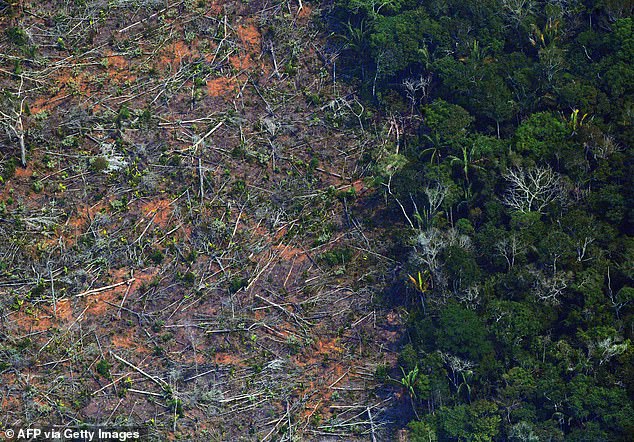
This study looked at the ‘biodiversity footprint’, which refers to the extent to which habitats of plant and animal species are affected. An example is deforestation – the process of cutting down trees, often to make room for growing crops, destroying species’ homes
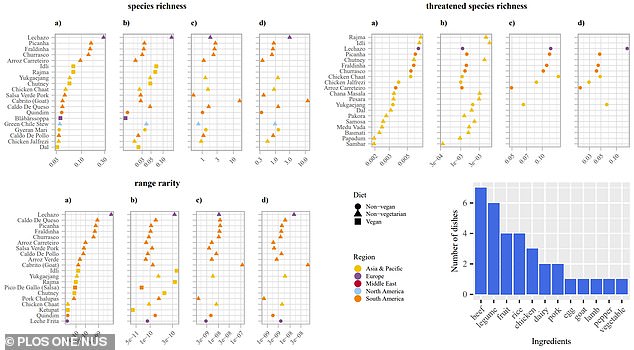
The authors used lists of popular dishes from CNN.com and TasteAtlas.com, standardizing each dish at 825 kCal. They calculated the biodiversity footprint of each dish’s ingredient by looking at the abundance, conservation status and range of wild mammals, birds and amphibians within the agricultural land used for the specific product.
Overall, the dishes with the largest carbon footprint include several Brazilian steak dishes (picanha, churrasco, fraldinha).
Other meat dishes included salsa verde pork, chicken jalfrezi, yukgaejang (a Korean spicy beef and vegetable stew), caldo de pollo (chicken soup).
But the list also included several vegan dishes such as dal (lentil soup), rajma (a kidney bean curry), chana masala (chickpea curry) and idli (a fermented savory rice cake).
In addition, there was caldo de queso (a simple soup consisting of potatoes, tomato, onions, peppers and oregano) and gyeran mari (an omelet with chopped vegetables).
The scientists say these meals require clearing animal habitats to make way for the ingredients to grow.
In contrast, the dishes with the smallest ecological footprint were usually vegetarian or vegan, starchy and based on grains or potatoes.
Examples include French fry-style recipes such as pommes frites and triple-cooked fries, kartoffelpuffer (a German potato pancake), and baguettes.
The researchers found that biodiversity footprint scores shifted depending on whether the ingredient was locally or globally sourced, and grown industrially or small-scale.
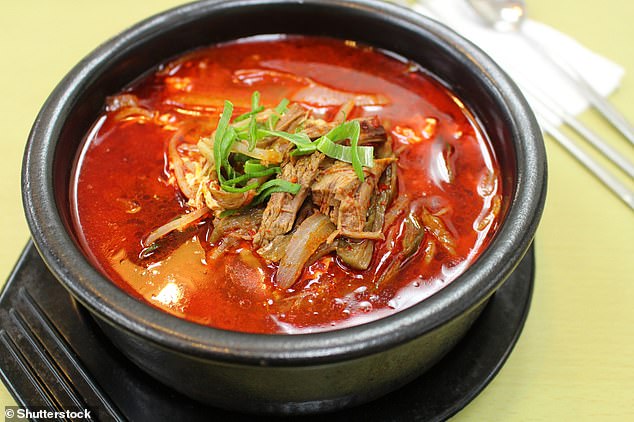
Pictured yukgaejang, a Korean spicy beef and vegetable stew, and one of the worst dishes that harm biodiversity
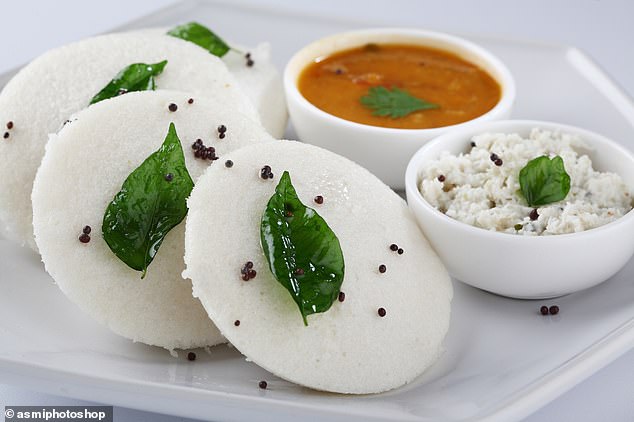
Highly biodiverse dishes mostly came from India and include chicken jalfrezi (a type of tomato-based chicken curry), chicken chaat, chana masala, idli (a savory rice cake, pictured) and rajma (red bean curry)
In general, dishes prepared with local products could be the best option.
‘Buying local if based in developed countries such as Britain would certainly help reduce the biodiversity footprint,’ study author Professor Román Carrasco from NUS told MailOnline.
‘One problem with organic food is that it is less efficient to produce and requires more land, which leads to compromises.’
The authors emphasize that their research does not look at the CO2 emissions of each meal, but rather the extent to which it destroys animal habitats.
It is known that beef is one of the worst foods in terms of CO2 emissions, but if we look at biodiversity separately, the picture is different.
A future study could combine biodiversity and carbon footprint to find the ultimate environmental impact of different foods.
According to Professor Carrasco and colleagues, their research can help ‘make sustainable eating decisions more accessible to consumers’.
“Small changes in the dish we choose and where we source the ingredients from can go a long way toward preventing species extinction,” they say in their paper.
‘A combination of consumer awareness to facilitate a transition to sustainable diets is imperative to mitigate the major impact of food production on biodiversity.’
The research was published today in the journal PLOS One.
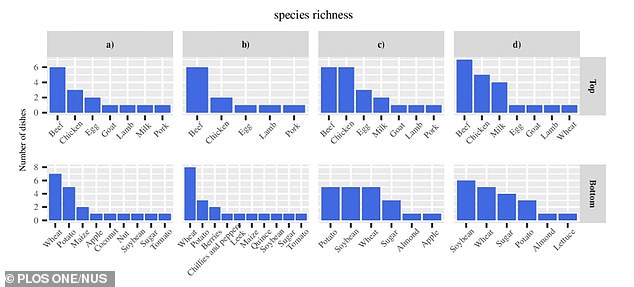
Chart ranks the species richness of different food ingredients: Species richness is the number of species of mammals, birds and amphibians affected by the production of each ingredient for
